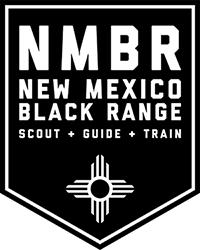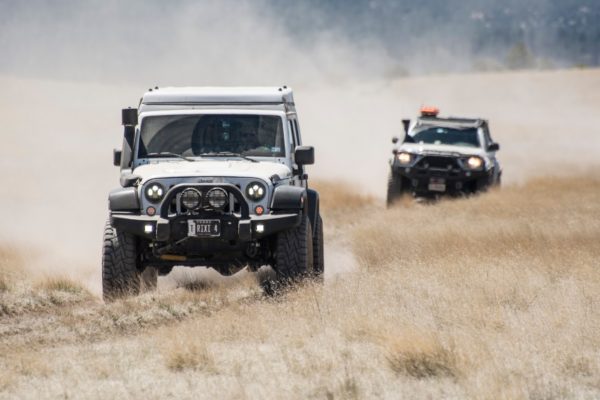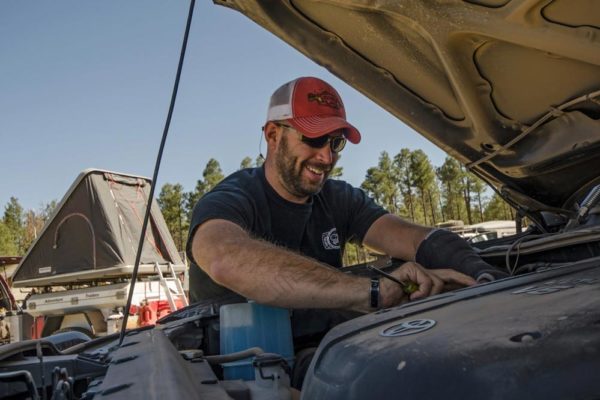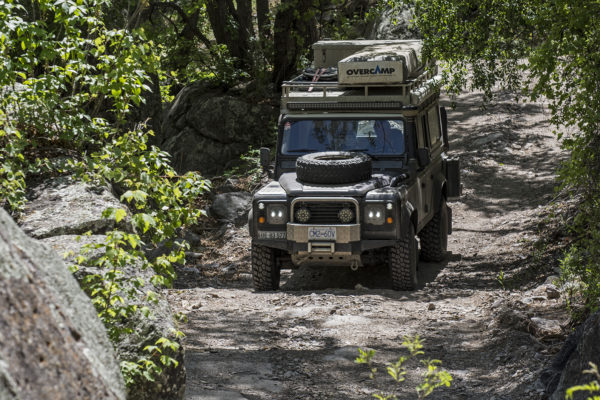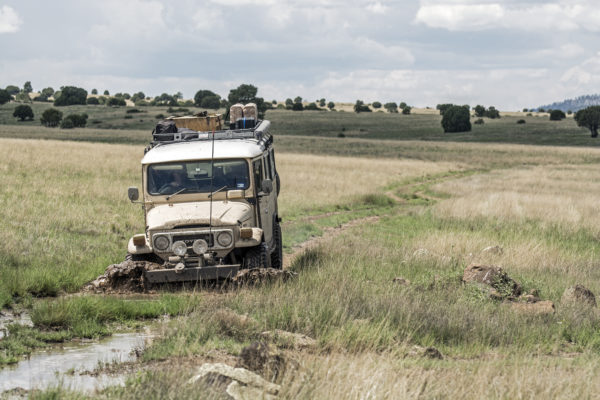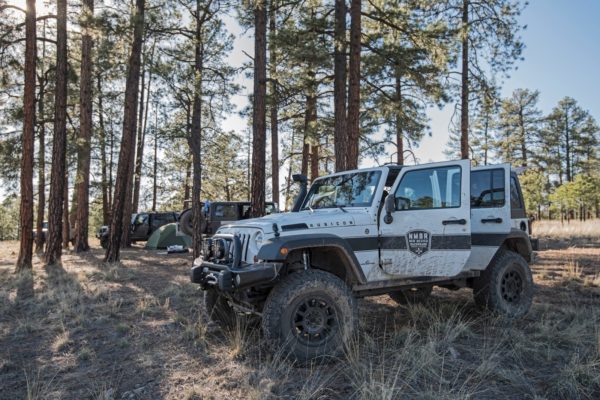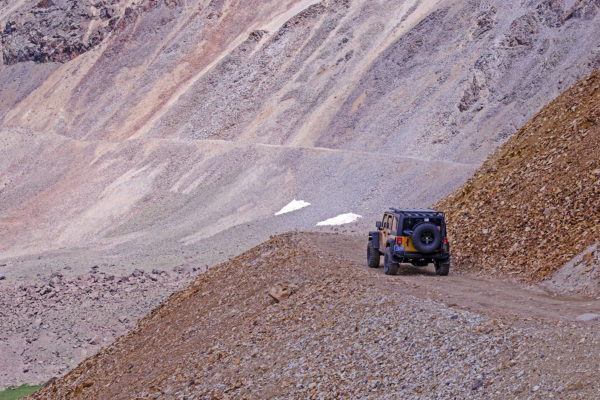Jake Quinones / June 27th, 2022
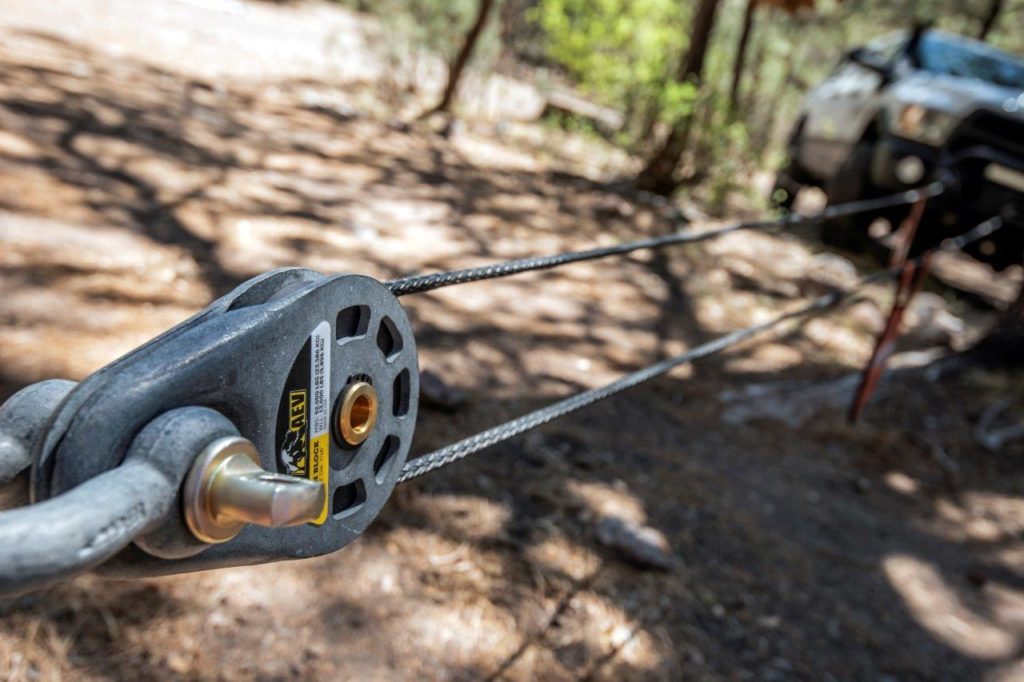
With the growing popularity of the full-sized truck platform for off-pavement adventures, enthusiasts upsizing their rigs are likely to find that their current recovery gear may not have a high enough weight rating. Historically, the available options for heavy-duty recovery gear have been somewhat limited. American Expedition Vehicles (AEV) has entered the vehicle recovery gear market with products for both mid-sized and full-sized four-wheel drives. Montana-born and Michigan-based AEV teamed up with a Canadian commercial rigging equipment manufacturer, to design and develop recovery gear pieces that, in the words of AEV, “captivated industrial safety and rigging standards, intelligent design, and high-quality materials.” All of AEV’s recovery gear includes clearly marked Working Load Limit (WLL) and Minimum Breaking Strength (MBS) weight ratings. Every four-wheel drive or overland enthusiast should understand these two ratings and how it relates to their vehicle’s actual weight.
American Expedition Vehicles (AEV) explains their recovery equipment’s weight ratings: “Minimum Breaking Strength (MBS) is the minimum force necessary to cause a recovery device to break or fail. Working Load Limit (WLL) is the recommended maximum force a recovery device is intended to safely support, when the force is applied in-line and through the centerline of the device. The WLL is calculated by dividing the Minimum Breaking Strength (MBS) by a safety factor that is generally around 4-to-1. For example, the AEV Snatch Block has an MBS of 52,000 LBS, so when divided by a safety factor of 4-to-1, the WLL becomes 13,000 LBS.” This means that the AEV Snatch Block would be suitable for vehicles and vehicle and trailer combinations up to 13,000 pounds.
Over the past year, New Mexico Black Range (NMBR) has evaluated AEV’s recovery gear kit during guided overland trips and tours, NMBR’s EXP-4WD training, and scouting/fieldwork. American Expedition Vehicles’ recovery gear line-up includes static recovery straps and ropes, kinetic recovery straps, winch extension ropes, soft and hard shackles, snatch block, gear bag, and a few other accessories.


Full Size Kinetic Recovery Strap: 4″x30′, MBS 39,200 LBS, WLL 9,800 LBS
American Expedition Vehicles’ Full-Size Kinetic Recovery Strap is constructed of nylon and features a threaded protective edge guard the full length of the strap for added durability. This strap can handle the weight of the NMBR Prospector (a fully built RAM 2500 Power Wagon) without issue. The strap performs predicably, and on par with other high-quality recovery straps NMBR has used over the years. The Full-Size Kinetic Recovery Strap is touted by AEV as “the only Recovery Strap in the aftermarket that complies with industrial rigging standards.”
Kinetic recovery straps and ropes provide a simple and productive option for pulling a stuck vehicle out of soft substrates such as snow, mud, or sand. The basic concept of kinetic energy recovery involves two vehicles, the stuck vehicle, and the assisting/pulling vehicle, connected by a kinetic energy (or elasticized) strap or rope. The assisting vehicle drives away from the stuck vehicle at a safe speed and stretches the kinetic strap or rope between the vehicles. Once the resistance between the moving assisting vehicle and kinetic strap or rope reach critical tension, the resulting energy transfer from the assisting vehicle, through the strap or rope, to the stuck vehicle will (hopefully) move the stuck vehicle and free it.
NMBR Tip: Like most recovery equipment, the lifespan of a kinetic recovery strap or kinetic rope is not “forever.” Kinetic recovery straps and ropes can generally be used anywhere from 10 to 40 times, depending on manufacturer specifications and recommendations, before their elasticity is diminished to the point that they become unsafe for use and/or ineffective—acting more like a static strap. Additionally, time, hard use, and/or abuse can reduce the service life, performance, and weight ratings of kinetic straps and ropes. Give kinetic recovery straps and ropes a short break between pulls to allow them to return to their resting (non-tensioned) length and to maximize performance.
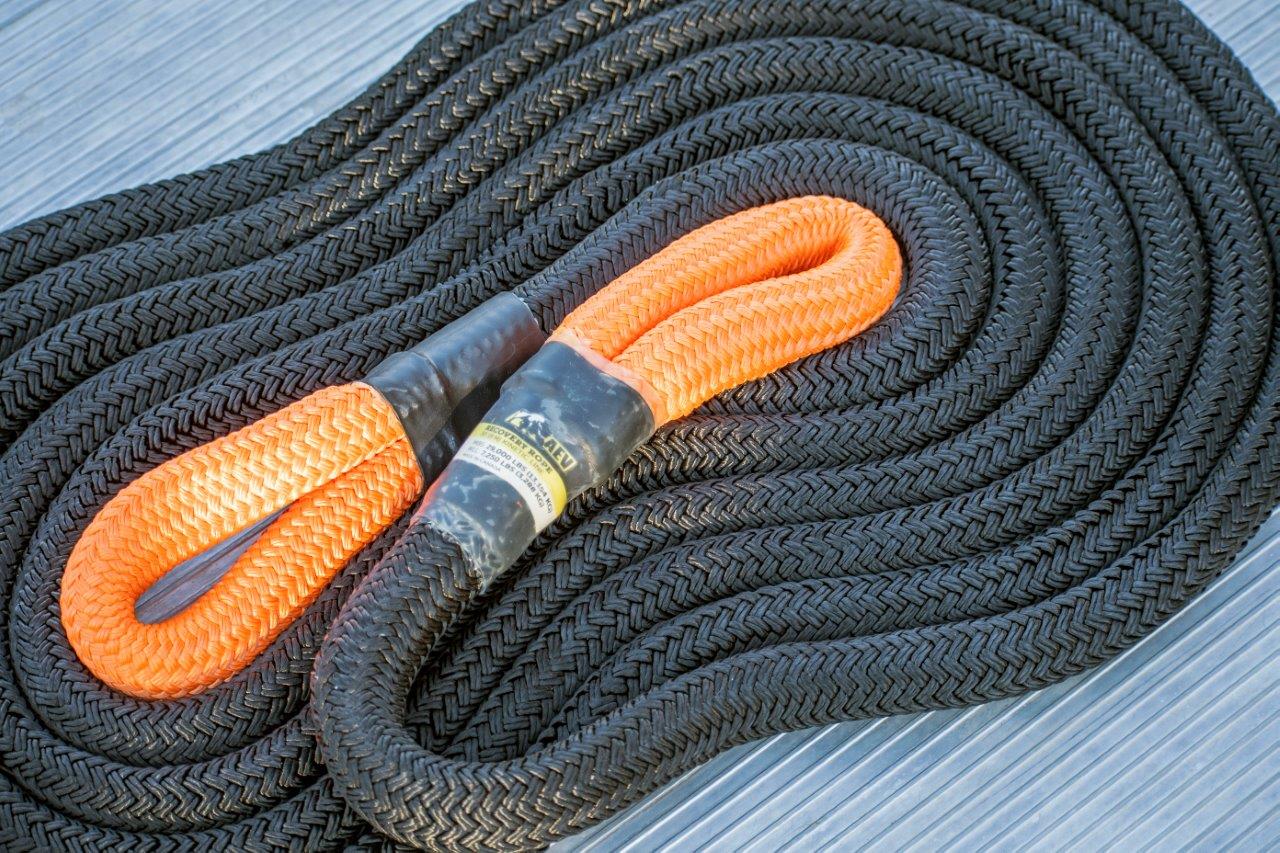
AEV Kinetic Recovery Rope (Mid-Sized): 7/8” x 30’, MBS 29,000 LBS, WLL 7,250 LBS
American Expedition Vehicles’ 7/8” x 30’ Kinetic Recovery Rope is made from a heavy duty, double braided nylon with a reinforced loop at each end for protection against abrasion. This 7/8” Kinetic Recovery Rope is intended for mid-sized vehicles and full-sized vehicles weighing at or below 7,250 pounds. Despite offering a Full-Size Kinetic Recovery Strap (WLL 9,800 pounds), AEV should consider adding a kinetic recovery rope for full-sized vehicles to their recovery gear line-up. Arguably, the benefits of using a recovery rope over a recovery strap include more stretch and resilience which equates to more effective kinetic recovery performance, safer operation, and a longer service life. Generally, kinetic recovery ropes stretch about 30% beyond their resting length under full tension, whereas straps stretch about 20% or less. The kinetic rope’s enhanced elasticity over straps helps reduce the shock load on anchor points, connections and the rope itself, providing a higher safety factor during kinetic recoveries. As with AEV’s Kinetic Recovery Strap, the Kinetic Recovery Rope performed well in a variety of soft surface conditions and situations with the added benefit of more stretch and elasticity.
Kinetic recovery straps and ropes, also referred to as snatch straps and ropes, should not be confused for (or used as) static (non-stretching) tow straps and ropes. Static straps and ropes are used for towing/pulling, winching, and anchor point connection applications—not for kinetic/snatch recovery. Kinetic straps and ropes are to be used only for kinetic recovery operations. When possible, use soft shackle connections for kinetic recovery purposes. If a kinetic recovery goes wrong and equipment fails, a projectile soft shackle may cause injury where a projectile steel shackle may cause death.
NMBR Tip: American Expedition Vehicles’ Kinetic Recovery Rope may not be suitable for many full-sized trucks or mid-sized trucks or utes pulling off-road trailers. Knowing the weight of your vehicle, or vehicle/trailer combo, both loaded and unloaded is crucial in establishing which recovery gear is safe and suitable for use. For example, a stock/un-modified and unloaded RAM 2500 Power Wagon weights around 7,000 pounds. This truck is rated to haul about 1,500 pounds of additional weight before meeting the truck’s payload capacity and Gross Vehicle Weight Rating (GVWR) of about 8,500 pounds. This weight breakdown provides an example of how AEV’s Kinetic Recovery Rope would only be appropriate for an unloaded and stock/un-modified Power Wagon as the Working Load Limit of AEV’s 7/8” x 30’ Kinetic Recovery Rope is 7,250 pounds. It’s essential that four-wheelers and overlanders weigh their vehicles and trailers fully loaded. This task can be easily completed at a truck stop scale.


AEV Utility Rope - 1/2″ x 10′, MBS 34,300 LBS, WLL 8,575 LBS
The utility rope has risen in popularity over the years as a do-it-all recovery kit piece. These ropes can be used as a bridle to equalize pulling forces between two bumper mounted shackles or to wrap around irregularly shaped but solid and suitable anchor points such as a tube chassis or frame rails. In a pinch, they can serve as a short winch extension or tow strap. American Expedition Vehicle’s Utility Rope features a full-length protective sleeve, Dyneema® SK78 synthetic fiber construction, and handy storage strap.
NMBR Tip: While some utility ropes are marketed for use as a tree saver strap, ropes should not be used for this purpose. A proper tree saver strap distributes the pulling force generated through recovery efforts across the entire width of a strap whereas a rope used for this purpose places the force on a significantly smaller area. Excessive constricting pressure can damage to or kill a tree.


Full-Size Winch Extension Rope 1/2″ x 30′, MBS 34,300 LBS, WLL 8,575 LBS
When your rig is bogged and your winchline doesn’t quite reach that lone tree up the trail, a winchline extension may provide your only salvation. American Expedition Vehicles’ 1/2” Full-Size Winch Extension Rope is a robust piece of kit for full-sized truck winching recovery uses. The rope is constructed of 1/2” Dyneema® SK78 synthetic fiber and comes with a storage strap. NMBR’s preference generally leans towards ropes over straps. Compared to winchline extension straps, winchline extension ropes require less storage space, provide more versatility in various winching scenarios, and are slightly easier to manipulate while rigging. Winch extension ropes and straps can also be used for towing and non-kinetic pulling recovery purposes. It’s worth mentioning again that static ropes and straps should never be used for snatch-style kinetic recovery use and kinetic recovery ropes and straps should never be used for winching operations or for towing and pulling.
Given the main purpose of a winchline extension is for added reach, NMBR’s preference is for ropes that are at least 50 feet in length.
NMBR Tip: Like other winching recovery gear, winchline extension straps and ropes should have working load limits (WLL) that meet or exceed the weight of the vehicle while fully loaded, and weight ratings that meet or exceed winch capacity and winchline ratings. These ratings should be clearly marked on the recovery gear itself.


Full-Size Soft Shackle 1/2″ x 18″, MBS 60,250 LBS, WLL 15,062 LBS
The rise in popularity of the soft shackle has resulted in numerous offerings ranging from un-marked and un-rated imports sold on Amazon to fully rated quality and pieces made by reputable manufactures. American Expedition Vehicles’ Full-Size Soft Shackle is constructed of Dyneema® SK78 synthetic fiber like AEV’s other static synthetic rope offerings. The Full-Size Soft Shackle’s extended length allows for greater ease of use while assembling connections, and more breathing room for bulky strap and rope loop ends. The Full-Size Soft Shackle that NMBR received for test and review measured 31 inches in length while open and fully extended, and 14 inches in length when closed/looped and tensioned. The shackle’s removable protective sleeve is a solid upgrade where most soft shackles are bare rope. Even with a protective sleeve, care and consideration should be made when mating soft shackles with metal parts and surfaces.
NMBR Tip: Just like recovery straps and ropes, soft shackles are susceptible to damage and subsequent failure when not used properly. Soft shackles can only be looped around metal parts and surfaces that feature smooth surfaces, beveled edges, and are absent of rough, chipped, scratched, or rough textured finishes. Steel winch line can mar surfaces making them unsuitable for later use with synthetic recovery equipment.


1” Full-Size Anchor Shackle MBS 102,000 LBS, WLL 17,000 LBS
For decades, anchor shackles, or bow shackles, have earned their place as one of the most essential and most often used recovery kit pieces. While soft shackles are all the buzz these days, anchor shackles will not soon be replaced. In situations where soft shackles are susceptible to damage; anchor shackles can endure punishing elemental and surface contact conditions. The “O” or “bow” shape of the anchor shackle allows for more even distribution of pulling forces from multiple angles over a standard “D” shaped shackle. It’s important to note that when NMBR talks about “our faithful friend” the anchor shackle, only high-quality units with clear stamped markings that provide size, weight rating, and brand name or trademark are being referenced. The AEV 1” Full-Size Anchor Shackle features an ArmorGalv® Coating with a high-visibility gold zinc coated pin for all-weather protection and corrosion resistance. This shackle yields staggering weight ratings—a Maximum Breaking Strength of 102,000 LBS and a Working Load Limit of 17,000 LBS. This equates to a safety factor of 6 to 1. The wide opening and ring interior of the 1” Full-Size Anchor Shackle allows ample room for loop placement. Most heavy-duty anchor shackle pins with a similar weight rating are only 7/8” diameter. Before purchasing a true 1-inch pin diameter anchor shackle such as this AEV unit, prospective buyers should check to ensure fitment and compatibility with their bumper mounted and hitch receiver type shackle hangars. For example, AEV’s 1” Full-Size Anchor Shackle is not compatible with the Factor55’s 2.5 HitchLink’s pin eyelet.
NMBR Tip: After using a shackle, check both the shackle and pin for cracks, irregular bends, or other abnormalities. Also, check that the pin threads completely in and out of the shackle without resistance. If the pin is difficult to thread, or thread damage is apparent, discard or recycle both the shackle and the pin as they may be compromised and no longer safe for use.


AEV Snatch Block: Maximum cable diameter 7/16”, MBS 52,000 LBS, WLL 13,000 LBS
American Expedition Vehicles’ Snatch Block is made in the USA and features stamped steel construction, ArmorGalv® coating, and a self-lubricating Oilite® bushing that can accommodate winch rope or cable width up to 7/16” in diameter. The Snatch Block’s stamp-formed shackle eyelets allow use with soft shackles—whereas most snatch block eyelets have sharp edges.
The benefits of using a snatch block pulley include increasing the pulling power of a winch, reducing stress on the winch’s internal running gear, allowing for a change in winch line direction, slowing the winching operation to a safe speed, and maximizing the amount of winchline used during recovery. Using more winchline is desirable because the maximum pulling power of a winch is achieved only once the winchline has been unspooled to the final full wrap around the drum. Using as much winchline as possible maximizes the performance of the winch and minimizes unnecessary wear and tear on its internals.
The operation of the AEV Snatch Block is smooth and predictable under load. A nice addition would be a rubber or nylon cinch strap or form fitting carry case that kept the unit tightly clasped and quiet for storage. After countless recovery operations using AEV’s Snatch Block, NMBR’s opinion is that this is the best snatch available on the market at this price point ($127.00) for vehicles (and vehicle/trailer combos) in the 13,000-pound and under category.
NMBR Tip: When winching, or performing any static or kinetic recovery, always remember to place a line dampener on each individual straight section/run of rope or strap. As an example, a double line winch pull that included a winch line extension would require three-line dampeners. Soft ropes and lines are safer than steel cable, but when they fail, they can still cause damage and injury. In the event of a line or connection failure, the line dampener helps drop the line and connection assembly to the ground where an undampened assembly is more likely to sail across the sky or crack like a whip. Place appropriately weighted dampeners within the middle third section of each strap or line length. Regardless of vehicle recovery operation type, always direct bystanders far away from recovery activities.
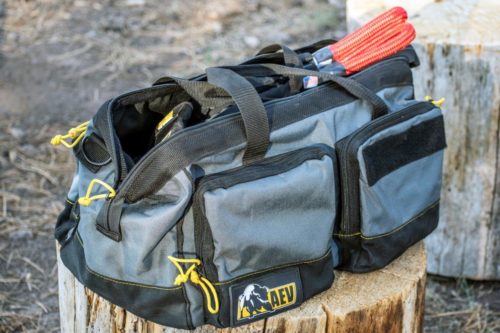

AEV Recovery Gear Bag
Just like a first-aid provisions, tools, and other essentials, recovery gear should be organized and accessible. AEV’s Recovery Gear Bag is one of the larger bags on the market. The USA made bag features durable construction with big, heavy-duty zippers and double-layered fabric added to high-stress areas. While the bag’s exterior zippered pouches provide a good amount of storage capacity, interior storage pockets would be a nice addition. All-in-all, the Recovery Gear Bag is a quality piece capable of holding a comprehensive recovery kit.
NMBR Tip: Rather than emptying the contents of your recovery bag onto the ground or out inside your rig, consider carrying a plastic boot tray with raised edges to stage gear close to the recovery operation. Use the same tray for tools and trailside repairs.


Overall Impressions of AEV’s Recovery Gear Line-up
When NMBR receives products for testing and review, those items go into service for guided trips, EXP-4WD training, and scouting/fieldwork. While NMBR does not abuse parts, equipment, or gear, all products tested endure a hard life of heavy use in a variety of situations, conditions, and environments. Over the past year, NMBR has used all the American Expedition Vehicles recovery gear outlined in this article alongside NMBR’s regular mix of tried-and-true equipment.
American Expedition Vehicles recovery equipment follows the same high standards and core principals as their vehicle parts and turn-key builds; careful attention is paid to design, materials, and quality. All the recovery gear performed in line with products made by Factor55 and Master Pull. It should be noted that safety factors and weight rating definitions vary among AEV, Factor55, and Master Pull. American Expedition Vehicles and Factor55 both provide Working Load Limit and Minimum Breaking Strength ratings for their recovery equipment. Factor55 uses a higher safety factor of 5-to-1 and AEV uses a safety factor of 4-to-1 to one except for the 1” Full-Size Anchor Shackle which is 6-to-1. Master Pull provides a Breaking Strength rating only; leaving the user to determine their own safety factor and Working Load Limit. When recovery gear is tested to determine at what point failure will occur, products are tested multiple times to ensure test accuracy. If a piece of recovery gear is tested three times, and the manufacturer is utilizing Minimum Breaking Strength ratings, the lowest performing test result for failure should be accepted as MBS. When a piece only states Breaking Strength, mystery swirls as to if the rating was given on the best, worst, average, or only test.
New Mexico Black Range’s favorite pieces in American Expedition Vehicles’ recovery gear are the 1/2-inch Utility Rope, 1/2-inch Soft Shackle, and Snatch Block. The 1/2-inch Utility Rope’s full-length protective sleeve provides the ultimate protection for one of NMBR’s most heavily used pieces—most often serving as a bridle for winching and other recovery operations. The Velcro storage strap is a nice addition for tidy pack-away. The extended length of the 1/2-inch Soft Shackle makes connections easy with maximum range of motion during rigging assembly. The shackle’s removable protective sleeve keeps the Dyneema® SK78 synthetic fiber underneath still looking like new after a year of hard use. The Snatch Block is best-of-the-best; no other vehicle recovery snatch block has the features and weight ratings at this price point. Further, the design of the AEV Snatch Block allows the use of soft shackles or anchor shackles.
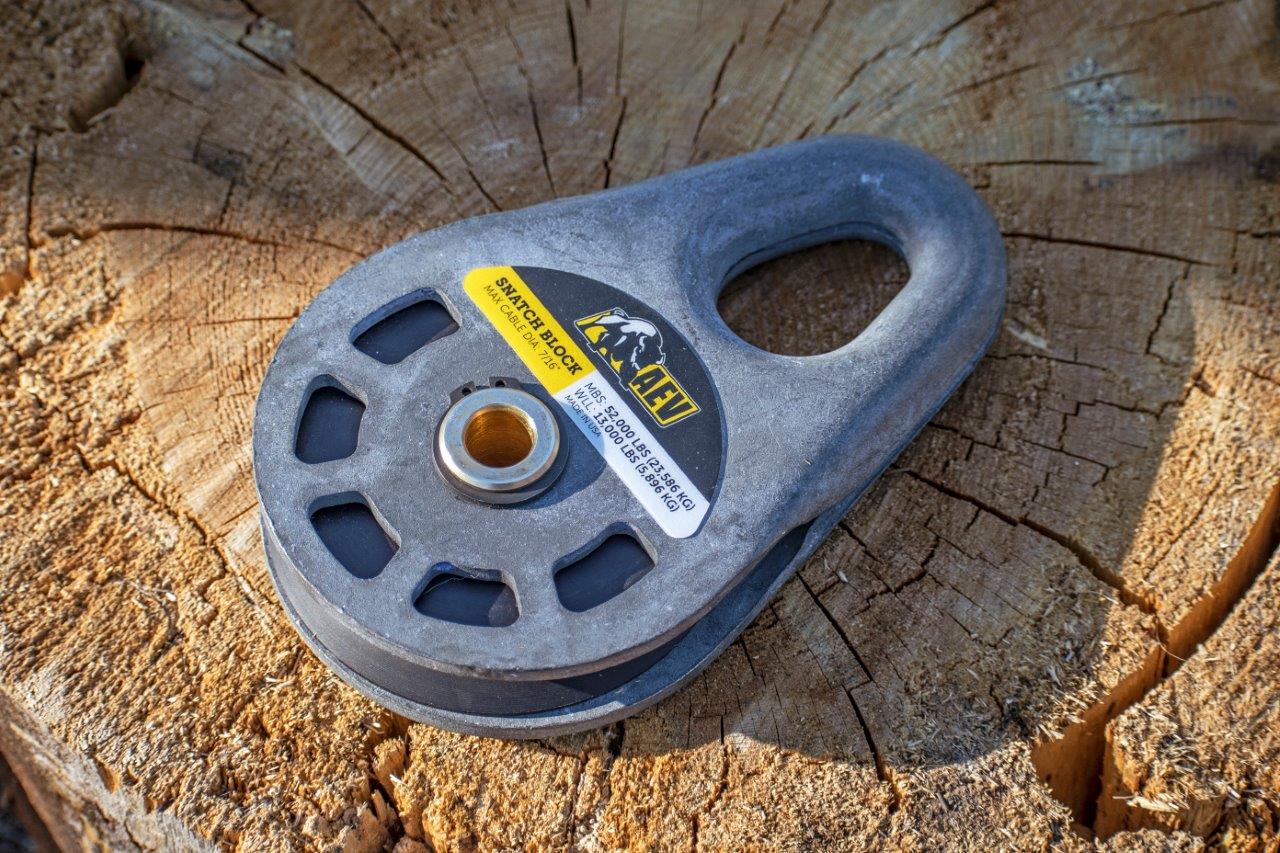
After a year utilizing AEV’s recovery gear for a year, NMBR has developed feedback regarding changes or improvements that could be made to some products. All of AEV’s synthetic line-based gear features labels that are shrink wrapped onto the rope. While the assumption is that the manufacturer’s heat application method used to shrink wrap the labels involves low heat, heat exposure can damage the integrity of rope fibers. Though not a big deal, the shrink-wrapped labels can sometimes limit the flexibility of the rope, mainly for soft shackle applications. Fabric tags may provide an alternative labeling method. Further expansion of AEV’s heavy-duty and full-sized truck specific product line should include items such as a line dampener, kinetic recovery rope, tree strap, 7/8 pin anchor shackle, as well as a closed system winch shackle mount and 2.5-inch hitch receiver style shackle mount that are both soft and metal shackle compatible. American Expedition Vehicles may also consider providing the consumer with detailed safety, use, and care instructions to accompany their recovery products, or create a video series that highlights proper equipment use. Knowledge, professional training, and experience is fundamental to ensuring safe and effective vehicle recovery operations.
Bottom Line: American Expedition Vehicles new recovery gear line-up provides stiff competition and another premium option to NMBR used and recommend equipment manufacturers such as Factor55 and Master Pull. With further expansion the recovery product lineup—specifically for full-sized truck applications—AEV could be a one stop shop for buyers with heavy-weight overland vehicles.
Please note: AEV provided NMBR with these products at no charge for this review. NMBR was not paid for this review.
